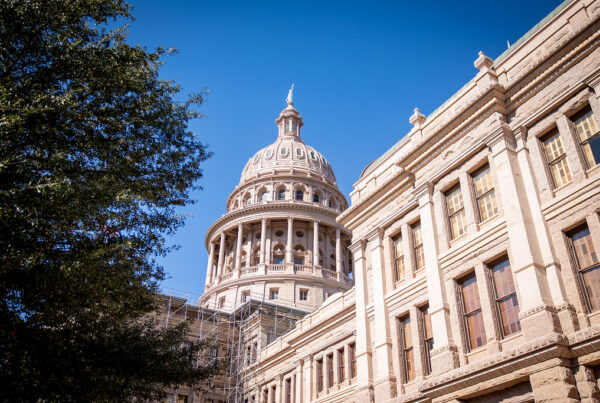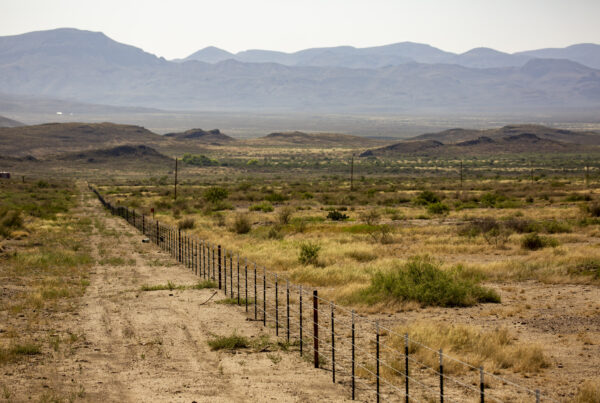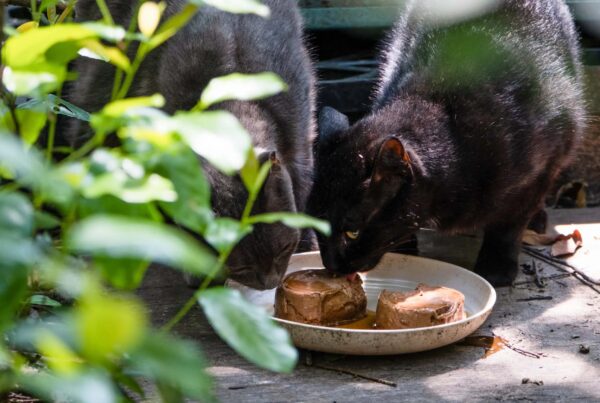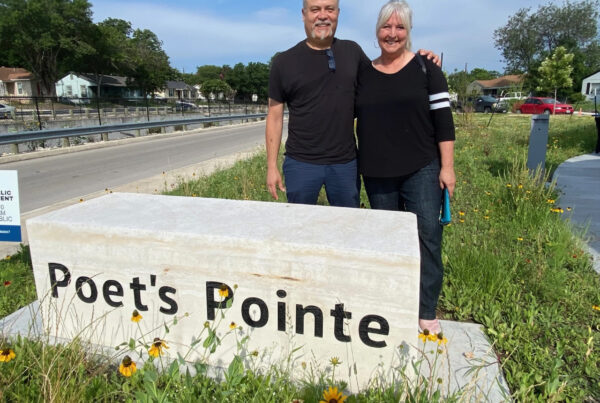As many parts of Texas continued to be gripped by extreme heat, news of a power plant failure in North Texas last week brought even more attention to the state’s electrical grid.
Doug Lewin is the author of the Texas Energy and Power newsletter on Substack. He says the current risk of blackouts is low, thanks in part to recently updated backup systems at the nuclear plant that shut down. Listen to the interview above or read the transcript below.
This transcript has been edited lightly for clarity:
Texas Standard: There was a Texas energy story that got missed by many heading into last weekend. What happened with a nuclear power reactor?
Doug Lewin: Yeah, one of the four [nuclear] units within the state of Texas – it was at Comanche Peak, which is in Glen Rose outside of Fort Worth – went down. It was apparently not an energy-related decision. It was a separate issue with equipment sort of outside of the reactor. But it did cause the plant to go down. It stayed down for about 48 hours. And then they started to bring it back.
As far as I could tell, as of yesterday, it wasn’t all the way back, but about 80% back. And that is a really big deal. The four nuclear units are the largest sources with about 1,200 megawatts of power. To put that in perspective, the city of Austin – Austin Energy – uses about 3,000 or 3,500 megawatts. 1,200 megawatts is a lot of power. And it’s definitely good to have it back.
So about a third of what the City of Austin uses was offline. Is my math right there?
Yeah, that’s right. Just from that one unit. So it really has an impact on the system. I mean, just one unit is about one and a half percent of the peak load of Texas. So those are the largest units.
And also what happened that’s worth pointing out is that at that point, ERCOT called a backup reserve service, which had just gone into place about five or six days before that unit went down. Much of that was battery storage. So grid frequency had dropped, which is a little bit dangerous. But batteries mostly – probably some fast-acting gas as well – jumped in to stabilize the system.
» SEE MORE: Heat wave will test Texas’ grid, but power outages are unlikely
Is this just the kind of thing that happens from time to time? I mean, it happens in my house. Things sort of break and I’ve got to call the water guy out here or the A/C guy out here. Or does this highlight broader concerns, or both?
These things do break. I mean, entropy is a thing. And of course, heat wreaks havoc on all sorts of it. It wreaks havoc on our bodies, wreaks havoc on equipment as well. So, you probably had the experience, I think everybody probably has at some point in their life, of their car breaking down or their A/C breaking down. And that happens with a much higher frequency when the mercury rises above 100 degrees.
So these sustained periods of heat are really, really hard on equipment. And we are seeing sustained higher levels of outages of gas, coal and nuclear plants than we would typically see. I think a lot of that is attributed to the heat.
You mentioned the backup that was there. Was that good planning or good luck?
Both. The ERCOT Contingency Reserve service is what that new backup is called. An “ancillary service” is what they call it at ERCOT. But it basically just means a backup reserve that had been in planning for years and they had been planning to bring it online during the summer. So I think there was some amount of good planning there. They knew they needed another tool in their toolbox to deal with things like a big nuclear unit or big coal plant.
We had a coal plant drop off yesterday and again, that same service was used. They know those kinds of things can happen on the system. Wind can drop. You can have clouds go over solar panels. There’s all sorts of things that can happen to any different energy source.
So having those backups is smart. They planned for it well and I think there was some amount of luck that they happened to have turned it on just a few days before that nuclear unit went down.
» GET MORE NEWS FROM AROUND THE STATE: Sign up for our weekly ‘Talk of Texas’ newsletter
You mentioned this was years in the planning. I know the Texas Legislature did pass some measures to further “fix the grid” after that horrific 2021 massive failure. What did they agree on by the end of the session? And I’m guessing this most recent backup wasn’t part of that.
No, it wasn’t. I don’t know how long they’ve been planning that, but it does go back years. It might be as many as three or four years. They’ve been talking about it for a very long time. So that was unrelated to what the Legislature passed.
I know the Legislature really spent a lot of time arguing about different market design. These are sort of changes that would be put into place many years in the future. That was what most of the discussion was about. They didn’t do a lot of the things that I think we most need to do to have a reliable grid, which I really think focuses on the demand side.
There’s a heavy focus at the Legislature on the supply side of adding new gas plants. They did pass a bill to give bonuses and low interest loans. That was actually a constitutional amendment. So Texans will have a chance to vote up or down on that in November.
But they really did not address the demand side. And I think that makes us much more vulnerable to what we’re seeing with these heat waves. And couple that with so many people moving to Texas, very sharply rising peaks, the peak demand on the system. And we’ve got to better manage that peak to have reliability. Unfortunately, the Legislature did not address that well.
» SEE MORE: Texas regulators paint bleaker-than-usual picture of electric grid ahead of summer heat
I’ve seen in your Twitter communications and on Substack that a lot of this has to do with just direct communication with Texans about how to use energy and when. Is that right?
I really think that is a key thing. We’ve got to start communicating with the public. It won’t matter in every single house if you live in a really poorly-insulated house. What I’ve been talking about in those communications is pre-cooling.
Basically, if you look at the ERCOT dashboard and you see what looks sort of like a roller coaster series of camel’s humps, you’ve got these very high peaks at 4:00 or 5:00, 6:00 in the evening – even 2:00 or 3:00 in the afternoon. And then you’ve got these really low valleys that are basically the rest of the day or either coming up the roller coaster or going down the roller coaster at those times. There’s plenty of capacity. If you hover your cursor over it, you’ll see like 10:00 or 11:00 or 12:00. And up until about noon we got 20,000 megawatts, maybe more of spare capacity.
So having people actually pre-cool their home, essentially using our homes and businesses as a form of storage, as a form of thermal storage. Store up that cool air, then you don’t need as much at 5:00, 6:00, 7:00 or night. It’s not so much energy efficiency as it is energy optimization.
We’re optimizing the time that we use energy and we’re going need to get more used to that, especially as electric vehicles become more commonplace. We’re going to need to charge our vehicles in the middle of the day and overnight, not at 7:00 in the evening. There’s plenty of energy available except for a few hours of the day in the summertime when there’s a different situation.
But summer is all about managing that peak, and unfortunately, we’re just doing a terrible job of it right now. And I think a lot of that comes back to policymakers not putting policies in place to compensate customers. That’s the other piece of as far as we need to pay people to be involved in this rather than beg them for conservation. There’s value associated with shifting your usage.
The big commercial industrial customers – like factory owners, Bitcoin miners, that kind of stuff – they get paid for it. But residential homeowners, renters, small business owners – they don’t. We need to change that. Pay them and shift that peak.













